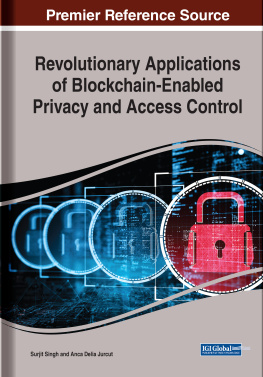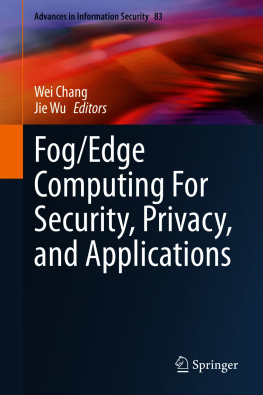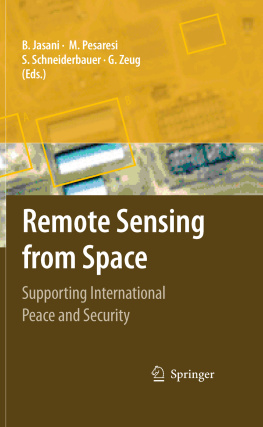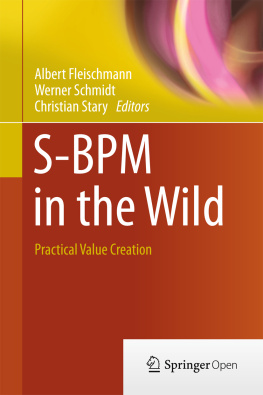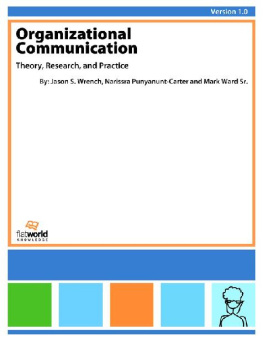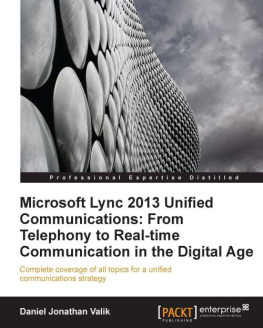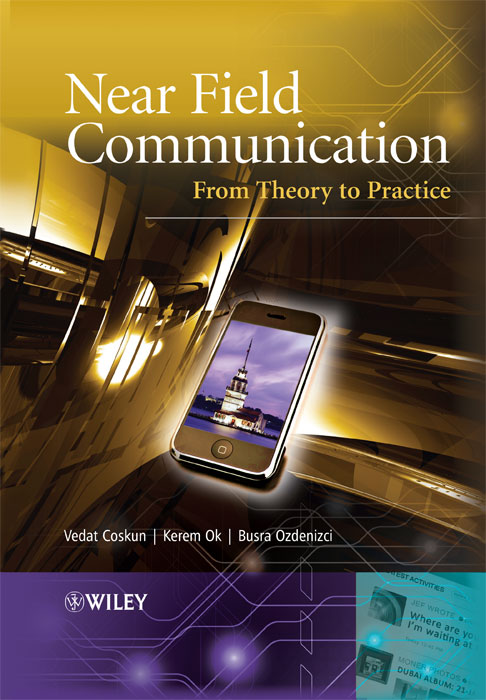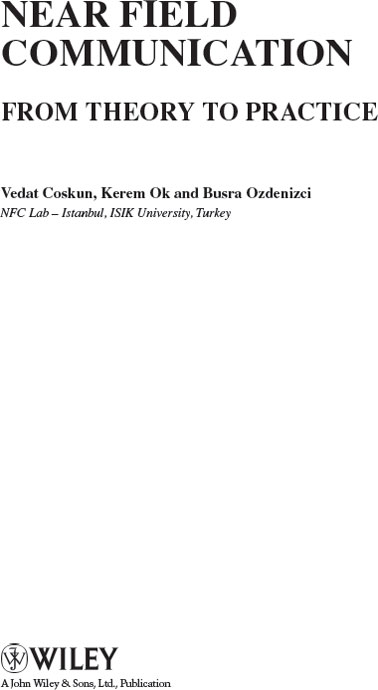This edition first published 2012
2012 John Wiley & Sons Ltd
Registered office
John Wiley & Sons Ltd, The Atrium, Southern Gate, Chichester, West Sussex, PO19 8SQ, United Kingdom
For details of our global editorial offices, for customer services and for information about how to apply for permission to reuse the copyright material in this book please see our website at www.wiley.com .
The right of the author to be identified as the author of this work has been asserted in accordance with the Copyright, Designs and Patents Act 1988.
All rights reserved. No part of this publication may be reproduced, stored in a retrieval system, or transmitted, in any form or by any means, electronic, mechanical, photocopying, recording or otherwise, except as permitted by the UK Copyright, Designs and Patents Act 1988, without the prior permission of the publisher.
Wiley also publishes its books in a variety of electronic formats. Some content that appears in print may not be available in electronic books.
Designations used by companies to distinguish their products are often claimed as trademarks. All brand names and product names used in this book are trade names, service marks, trademarks or registered trademarks of their respective owners. The publisher is not associated with any product or vendor mentioned in this book. This publication is designed to provide accurate and authoritative information in regard to the subject matter covered. It is sold on the understanding that the publisher is not engaged in rendering professional services. If professional advice or other expert assistance is required, the services of a competent professional should be sought.
Library of Congress Cataloging-in-Publication Data
Coskun, Vedat.
Near field communication : from theory to practice / Vedat Coskun, Kerem Ok, and Busra Ozdenizci.
p. cm.
Includes bibliographical references and index.
ISBN 978-1-119-97109-2 (cloth)
1. Near field communication. I. Ok, Kerem. II. Ozdenizci, Busra. III. Title.
TK6570.N43C67 2012
621.384dc23
2011033663
A catalogue record for this book is available from the British Library.
ISBN: 9781119971092
Vedat Coskun:
To lovely members of my family;
Mehmet & Fatma
Filiz & Ozgur & Arda
Mujdat & Kilinc & Muge & Selma.
Kerem Ok:
To my family who supported me all the time
Busra Ozdenizci:
To my dear parents and my brother Ozan
Preface
Near Field Communication (NFC) is a currently emerging and yet promising area which will have an enormous impact on the financial ecosystem as well as mobile technology throughout the world within just a few years. Mobile phone manufacturers, mobile network operators (MNOs), financial institutions such as banks, and information technology firms are performing R&D activities just to increase their share of the pie as much as possible. NFC, being a short range wireless communication technology that potentially facilitates mobile phone usage of billions of people throughout the world offers an enormous number of use cases including credit cards, debit cards, loyalty cards, car keys, access keys for hotels, offices and houses, eventually integrating all such materials into one single mobile phone. A solid and complete understanding of NFC requires knowledge in four areas: NFC technology; NFC security and privacy; NFC application development; and NFC business ecosystem. All of these issues are covered in this book which aims to present knowledge from theory to practice; including short use cases, case studies, application development examples, and finally existing featured trials from all over the world. This book provides information on NFC technology that appeals to the needs of almost all users interested in NFC technology and its ecosystem.
NFC Lab - Istanbul ( www.NFCLab.com )
This book is the collective effort of NFC Lab - Istanbul researchers, which is an integral part of Ik University, Istanbul.
NFC Lab - Istanbul considers NFC as an emerging technology that transforms innovative ideas into reality for the future information and communication society.
NFC Lab - Istanbul strives for research excellence in focused research areas relevant to NFC. The Lab aims to collaborate with MNOs, financial institutions, government agencies, research institutes, trusted third parties, and other service providers to facilitate widespread usage of NFC applications.
The Lab is committed to work on NFC technology with a multidisciplinary network of expertise all around the world. The core team is accountable for creating and maintaining business and academic partnerships and dynamically generates networks on a project basis.
Our Motivation to Write This Book
We, the members of NFC Lab - Istanbul, have performed many academic and industrial tasks over the last few years. As we required information, we had to use web sources, white papers, academic papers, works of the standardization bodies and so on. Many times the information we retrieved from several sources conflicted. Indeed, sometimes the information we obtained was inaccurate. Also, the sources involved different approaches which could not be compared easily.
Despite the fact that NFC is an emerging area, the volume of new articles being generated is increasing on a daily basis, and a satisfactory amount of information can be found on the Internet. However, the task of gathering the information and then retrieving the required knowledge is tiresome and time consuming.
When a practitioner with some expertise of programming in Java decides to access this new area, it is necessary to find the required sources from different sources. This will not be trivial, because in order to build NFC applications using Java language, the practitioner needs to collect scattered information, and then merge it for a better understanding. Even in this case, the user would be able to collect a small amount of information.
Some basic information exists in the public domain, and much more exists in academic literature, which either is not publicly available, or not easy to combine with the public information by non-academics.
Although some basic information exists in the current literature, other information is still not available. For example, we have performed extensive ecosystem analysis in this work.
As a result, we recognized the lack of and the need for a solid source that contains accurate information and addresses all of those involved in NFC technology and the NFC business ecosystem with a standard content.
As a matter of fact, we were the right team for NFC. We were pleased when we produced some tangible products such as conference papers, journal papers, applications, scientific projects, commercial projects, courses and so on. We then thought that it might be beneficial to share our knowledge with others. But how could we do this? The solution was to write a book containing the collective knowledge of the members.
Positive Discrimination
For the sake of simplicity on using pronouns and positive discrimination, we have ignored male pronouns throughout this book. Hence, we have used only she , her , and herself and chosen to ignore he, him, his, and himself.
NFC: Is it a Big Success or Another Failure Instead?
History is indeed full of technological and ecosystem failures. The satellite phone network is one example. Only a few years ago, NFC was unknown. In a short period, NFC has been introduced to great enthusiasm by several organizations including governmental departments, research centers, and companies.




